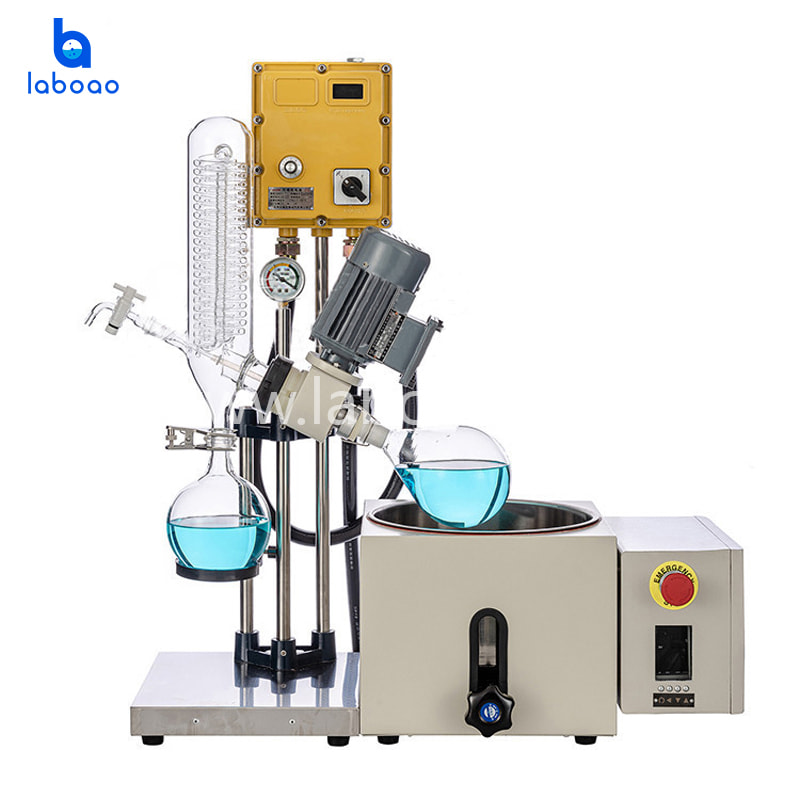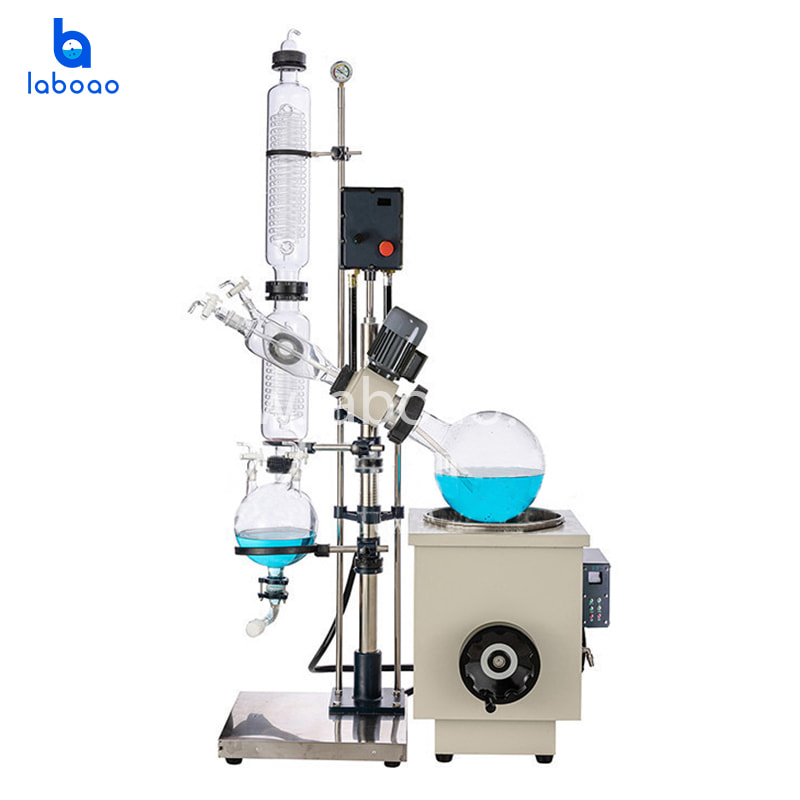The following are key considerations and a purchasing guide for condenser temperature control equipment:
1. Core Objective: Efficient Condensation
Condensation performance depends on: condenser temperature (the lower the better, but is limited by freezing point, viscosity, and cost), condensing area, and cooling medium flow rate.
The temperature control equipment's function is to provide a low-temperature, stable flow rate of cooling medium (usually water or antifreeze) to circulate through the condenser jacket.
2. Key Selection Factors:
(1) Minimum refrigeration temperature. This is the most important parameter! It determines how low-boiling-point solvents you can condense.
Basic principle: The minimum temperature of the temperature control equipment should be at least 20-30°C lower than the boiling point of your target solvent (the boiling point changes with the vacuum level). The greater the temperature difference, the higher the condensation efficiency and the faster the distillation speed.
Common solvent reference: Water (100°C), Ethanol (78°C), Acetone (56°C): Room temperature cooling water (10-25°C) is usually sufficient (needs a stable supply). Dichloromethane (40°C), Ether (35°C), Pentane (36°C), Petroleum ether (30-60°C): Requires low-temperature cooling (0°C to -20°C or lower). Especially low-boiling-point solvents (such as butane -0.5°C) or require extremely high condensation efficiency: -30°C or even -50°C equipment (or dry ice/liquid nitrogen) may be required.
Selection: Determine the minimum refrigeration temperature required based on the boiling point of your most commonly used and most difficult to condense solvent. Reserve sufficient temperature difference margin.
(2) Refrigeration capacity/power
Importance: This refers to the ability of the equipment to remove heat at the set temperature. It determines the ability to continuously condense high steam loads and the cooling rate.
Factors affecting refrigeration requirements: Solvent evaporation rate: For the same material, the greater the heating power, the more heat needs to be removed. Ambient temperature: The higher the ambient temperature, the greater the workload of the refrigerator. Temperature difference between the set temperature and room temperature: The greater the temperature difference, the greater the refrigeration capacity required to maintain the set temperature.
Selection: It is better to go big than small! Choose a device with a refrigeration capacity significantly higher than your estimated maximum heat load. An undersized refrigerator will result in: Inability to reach or maintain the set low temperature. Low condensation efficiency, and solvent vapor escapes to the vacuum pump, polluting the environment. Our company's rotary evaporator and the temperature control equipment recommended by our company (DL series products) have been calculated and matched. You can also consult our company's technical staff for professional selection advice.
(3) Circulation Pump Performance
Flow rate: A sufficiently high flow rate ensures that the cooling medium flows quickly within the condenser jacket, removing heat and preventing laminar flow that causes local overheating (affecting condensation efficiency). Insufficient flow rate is a common cause of poor condensation. The larger the condenser and the more complex the structure (such as long spiral tubes), the higher the demand for high flow rate. The larger the better! Common requirements are in the range of 10-25 L/min.
Head/pressure: Ensure that the pump can deliver the coolant to the highest point of the condenser and overcome the pipe resistance (length, elbows, valves, and internal flow resistance of the condenser). The laboratory layout (equipment height difference) directly affects the head requirement. Ensure that the equipment head is greater than the total system resistance.
(4) Cooling medium:
Water-ethylene glycol mixture: Most commonly used. The ratio determines the freezing point (e.g. 20%-40% ethylene glycol can reach -10°C to -20°C). Note that viscosity increases with decreasing concentration and temperature (affecting flow rate).
Specialized low-temperature coolants: such as silicone oil-based or specially formulated coolants, have lower viscosity and are suitable for lower temperatures (< -25°C) and precise temperature control. They are more expensive.
Selection: Choose the appropriate type and concentration of coolant based on the required minimum operating temperature. Make sure the freezing point of the coolant is at least 5-10°C below the minimum set temperature of the equipment!
(5) Safety and protection functions:
Over-temperature/over-pressure/over-current protection: protects important components such as the compressor.
Good ventilation: the equipment itself needs space for heat dissipation.
(6) Brand and quality:
Choose a well-known laboratory refrigeration equipment brand to better guarantee quality, reliability and after-sales service.
(7) Budget:
Prices vary greatly depending on the refrigeration temperature, refrigeration capacity, brand and functions (such as heating, high precision). After clarifying the core requirements (lowest temperature and refrigeration capacity), choose the best model.

